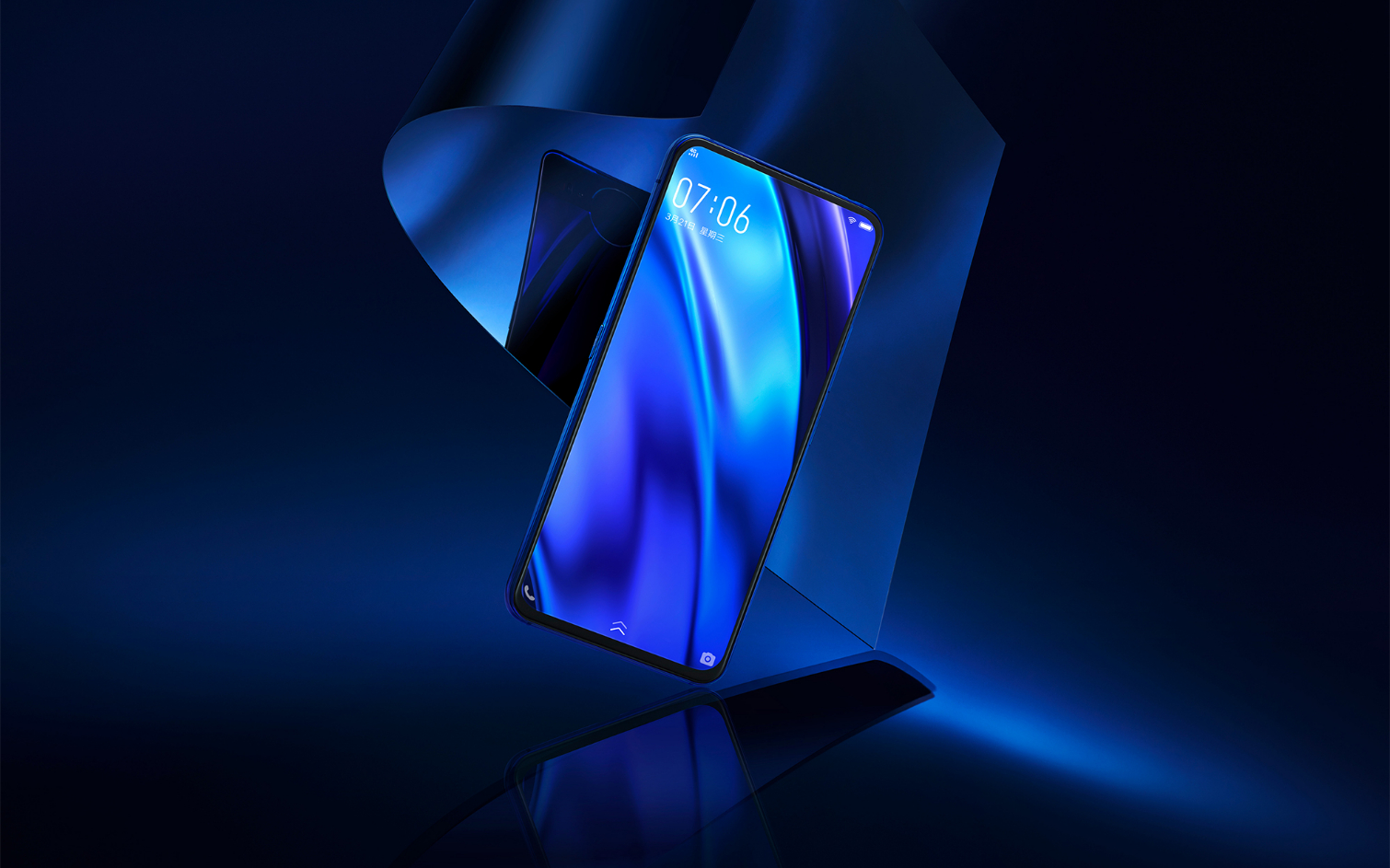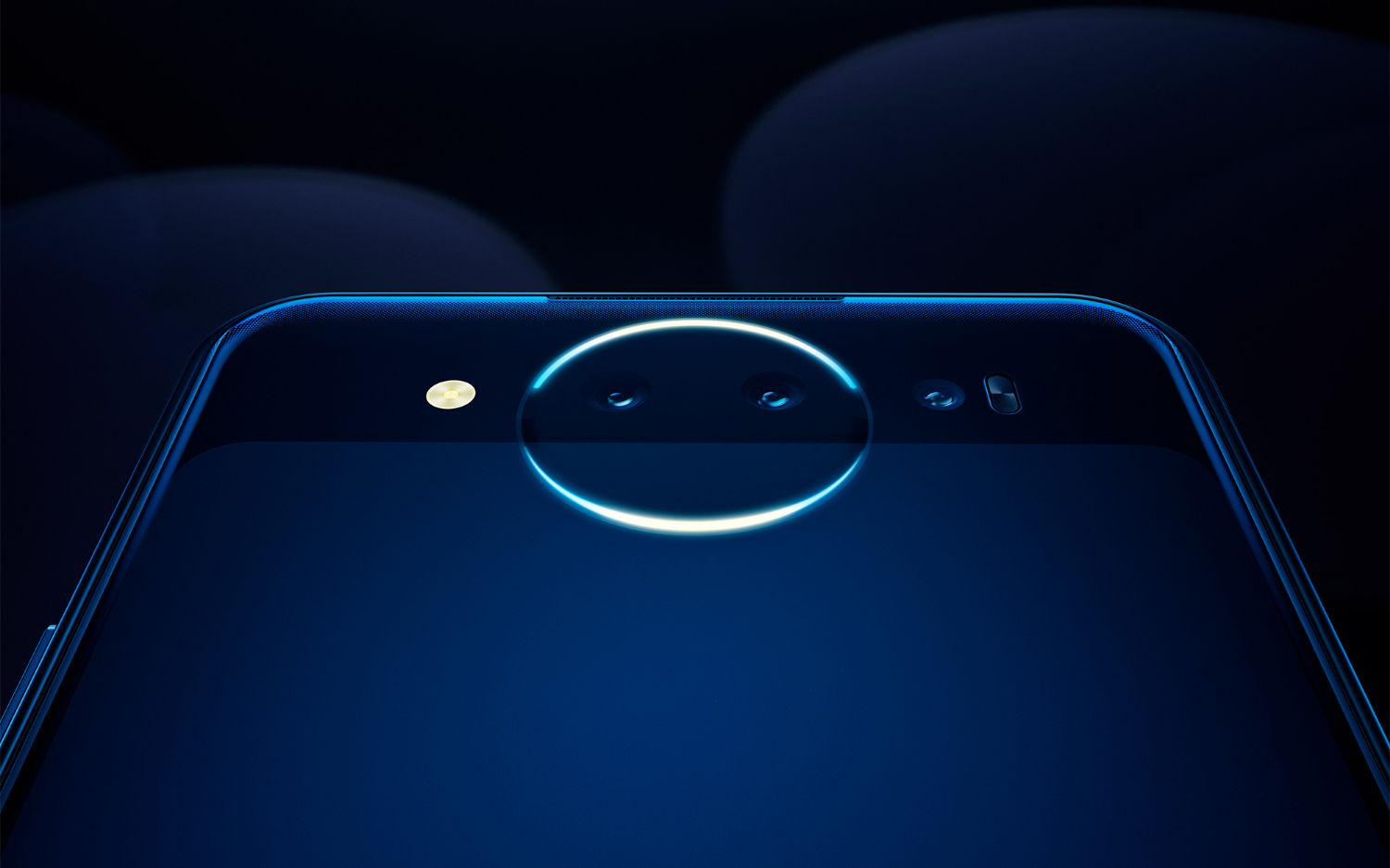Vivo’s New Phone Uses Dual Displays to Avoid a Notch
The latest smartphone from Vivo skips the front facing camera but doubles up on displays.
Nobody likes notches or bezels, and some phone makers have adopted creative strategies for avoiding both. Oppo, for example, built a phone called the Find X with a motorized, slide-out portion sandwiched within the frame that reveals itself when taking a selfie. Xiaomi developed a more manual solution for its new Mi Mix 3, with a magnetically anchored display that can be pushed down to trigger the front facing camera. As for fellow Chinese phone maker Vivo — well, it's gone a different route entirely.

You may remember Vivo as the company behind the Nex S — a device with a tiny pop-out camera driven by motors that would peek out of the top edge only when you needed it. This allowed the Nex S to get by with no notch and barely any bezels. For its latest phone, Vivo has gone back to the drawing board and refined its concept even further with the Nex Dual Display Edition, revealed today (Dec. 11) in Shanghai.
The thought process here is, why duplicate cameras on the front and back if you can duplicate screens? In addition to its regular 6.4-inch AMOLED panel, the Nex Dual Display houses a second 5.5-inch AMOLED panel on its backside, below the phone's triple camera system. Those are the only cameras on the phone, and because there are two screens, you can use them in any direction — either pointing the lenses at yourself, or at something in front of you. ZTE's oft-maligned foldable Axon M operated on a similar premise — albeit with a different form factor, and clunkier implementation.

It's a clever solution, if a bit overkill. Frankly, it's hard to imagine how useful this setup would be outside of a photo op. Sure, notches and bezels are ugly, and if all goes according to plan, one day in the not too distant future, we may not have to bear the sight of them anymore thanks to embedded components. But there's definitely something silly and superfluous about solving the front-facing camera dilemma with a back-facing screen.
MORE: The Most Anticipated Smartphones of 2019
Then again, you could argue that at least Vivo is trying something new, in an industry that could desperately use a novel approach. And the phone maker has done more than just lavish its attention on that second screen. The Nex Dual Display has some pretty special cameras, too, combining a main 12-megapixel dual-pixel sensor with a depth-aware time-of-flight 3D camera and a third lens specifically designed to capture great videos at night. Plus, the ring around the camera stack isn't just there for cosmetic reasons — it can actually be used as a softer, less intense flash for selfies.

The Nex Dual Display features other modern flagship phone hallmarks as well, like an in-display fingerprint sensor and a titanic 10GB of RAM, equal to what OnePlus is offering in its new McLaren Edition 6T.
Get instant access to breaking news, the hottest reviews, great deals and helpful tips.
We currently have no word on how much the Nex Dual Display will cost, but you can be assured it won't be coming to the United States. Europe may be a bit luckier, though that continent also missed out on the Nex S. In other words, while it's interesting to see what's happening with smartphones in the rest of the world, don't expect to get your hands on this particular model.
Image Credit: Vivo
Adam Ismail is a staff writer at Jalopnik and previously worked on Tom's Guide covering smartphones, car tech and gaming. His love for all things mobile began with the original Motorola Droid; since then he’s owned a variety of Android and iOS-powered handsets, refusing to stay loyal to one platform. His work has also appeared on Digital Trends and GTPlanet. When he’s not fiddling with the latest devices, he’s at an indie pop show, recording a podcast or playing Sega Dreamcast.
